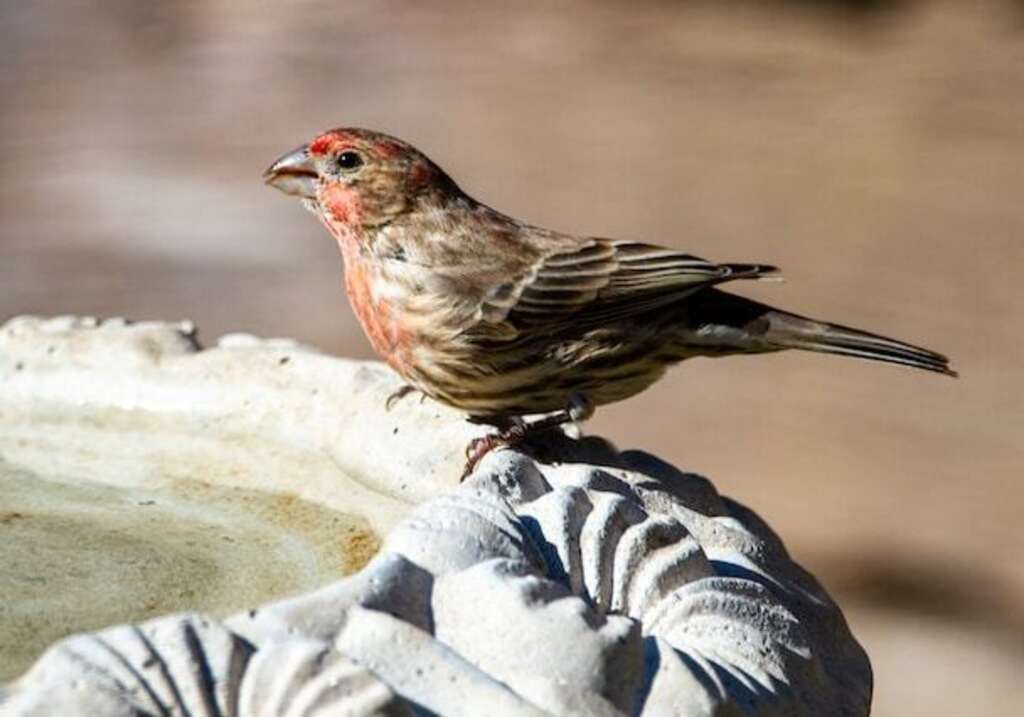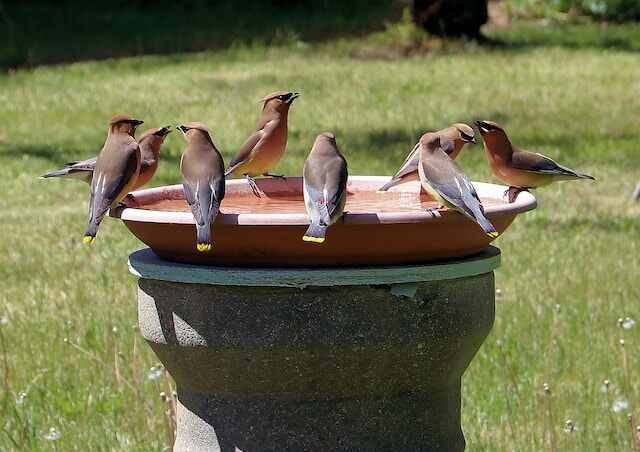Bird lovers and birdwatchers understand the importance of creating a healthy outdoor environment for birds to thrive. Providing a habitat that offers food, shelter, and water is essential to attract birds.
One popular method of providing water is through the use of a bird bath.
A bird bath is a shallow basin filled with water designed to provide birds with an area to drink, bathe, and play. But, do birds actually use bird baths?
In this article, we will explore whether birds actually use bird baths and the benefits of having them in your yard.
Table of Contents
- 1 Explanation of Bird Baths
- 2 Importance of Bird Baths for Birds
- 3 Overview of the Topic
- 4 Do birds use bird baths?
- 5 Benefits of having a bird bath in your yard
- 6 Tips for maintaining a bird bath
- 7 Conclusion
- 8 FAQs: Do Birds Actually Use Bird Baths?
- 8.1 Do birds actually use bird baths?
- 8.2 How often should I change the water in a bird bath?
- 8.3 Can I put a bird bath near a feeder?
- 8.4 What depth should a bird bath be?
- 8.5 Do bird baths need a fountain or bubbler?
- 8.6 How do I prevent mosquitoes from breeding in the bird bath?
- 8.7 What should I do if a bird bath attracts unwanted pests?
- 8.8 Can I use tap water in a bird bath?
- 8.9 How do I keep the bird bath from freezing in winter?
- 8.10 What materials are best for a bird bath?
- 9 Author
Explanation of Bird Baths
A typical bird bath consists of a shallow basin made from stone, metal, or ceramic material placed on top of a pedestal or stand that elevates it off the ground.
The basin is filled with fresh water that attracts various bird species for drinking, bathing and preening their feathers.
Some styles also include fountains and misters, which can produce moving or falling water that some birds find more attractive.

Importance of Bird Baths for Birds
Bird baths provide many essential benefits for our feathered friends. Birds need access to clean freshwater sources regularly because they lose moisture quickly due to their high metabolic rates.
During hot weather and migration periods, when insects or other freshwater sources may be scarce, birdbaths become even more critical for maintaining optimal health.
In addition to hydration needs, birds need regular baths as part of their feather maintenance routine.
Bathing helps clean off dirt or debris from their feathers, while also aiding in oil distribution throughout their body’s feathers, which help keep them waterproofed against rain.
Overview of the Topic
This article aims to answer the age-old question about whether birds actually use birdbaths by exploring why these beautiful creatures need these amenities in your garden or backyard.
We will examine specific species of birds that use bird baths and the reasons why they do so.
Additionally, we will discuss the benefits of having birdbaths in your yard, including how they can help attract more birds to your garden and promote healthy habitats for these essential creatures.
We’ll provide tips to maintain a birdbath properly.
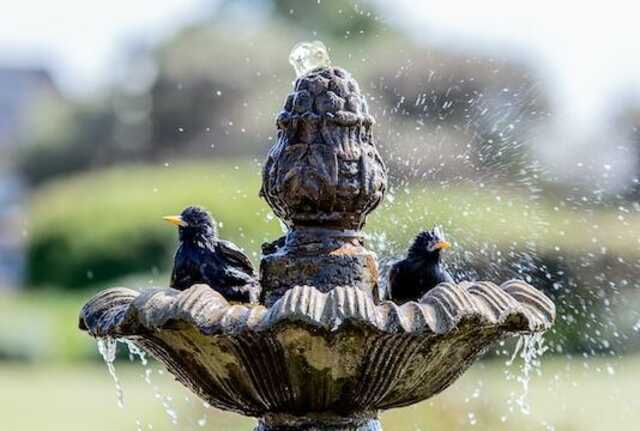
Do birds use bird baths?
Birds have been using bird baths for centuries, and the practice of providing them with a source of clean water has become increasingly popular among bird enthusiasts. But do birds actually use these baths?
The answer is a resounding yes! In fact, bird baths serve a variety of important purposes for birds.
Reasons why birds use bird baths
a) Hydration: Just like humans, birds need water to survive. But finding sources of clean water can be challenging in certain environments.
Bird baths offer a convenient and reliable source of hydration for birds, particularly during the hot summer months, when natural water sources may dry up.
b) Feather maintenance: Birds are known for their beautiful plumage, which requires regular maintenance to stay healthy and vibrant.
Bathing in water helps loosen dirt and debris from feathers, making it easier for birds to preen themselves and maintain their appearance.
c) Cooling off: Some species of birds are better adapted to heat than others.
For those that struggle in hot weather, bird baths can provide a welcome respite from the heat. Immersing themselves in cool water helps lower their body temperature, which makes them more comfortable and less prone to overheating.
Types of birds that use bird baths
a) Common backyard birds: Many species of common backyard birds regularly use bird baths as part of their daily routine. These include species such as chickadees, finches, sparrows, robins, and many others.
If you live in an area with these types of birds, providing them with a bath is an excellent way to attract them to your yard.
b) Migratory birds: Migratory birds face numerous challenges on their long journeys across continents each year. One challenge is finding reliable sources of clean water along the way.
For this reason, many migratory birds will stop at bird baths during their travels to hydrate and refresh themselves before continuing on their journey.
Overall, bird baths serve an essential purpose for birds and are a valuable addition to any backyard or outdoor space.
Not only do they provide birds with a source of hydration, but they also promote healthy habits and offer a convenient place for feather maintenance and cooling off.
By providing clean water regularly, bird enthusiasts can attract many species of common backyard birds and even contribute to the survival of migratory species during their long journeys across continents.
Benefits of having a bird bath in your yard
Bird baths are not only beneficial for birds but also for humans. They add aesthetic value to the yard and provide entertainment for those who love nature.
Besides, bird baths offer several benefits to birds that visit your yard. Here are some benefits of having a bird bath in your yard:
Attracting more birds to your yard
Birds require water as much as they need food, and providing clean and fresh water can attract them to your yard. Having a bird bath encourages various bird species that might not have visited your garden before, leading to an increase in biodiversity.
Increased biodiversity
Bird baths attract various species of birds, which contribute to increased biodiversity in your garden. More often than not, various types of birds thrive in different environments, seasons or regions; hence, having a variety of them visiting your garden is a sign that it is healthy and sustainable.
Enjoyment for People
Watching birds take baths can be very entertaining and educational for people. It offers an opportunity to study their behavior patterns like how they socialize while bathing or resting around the area during the hot season.
Promoting healthy habitats for birds
Besides being useful for hydration purposes and feather maintenance, bird baths also promote healthy habitats where birds can thrive.
Providing clean water regularly ensures that their health is catered for, since dirty stagnant water attracts harmful organisms like bacteria or mosquitoes, which may cause diseases among the avian population.
Moreover, providing a source of clean water helps keep them hydrated during extremely cold weather when natural sources might be freezing over or during droughts when finding drinking water can be challenging.
Reducing the spread of disease among birds
Another benefit of having a birdbath is that it reduces disease transmission among different avian populations.
When birds share water sources, there is a high risk of disease transmission, which can be eliminated through providing clean, fresh water in a controlled environment.
Providing a source of clean water
Birds need to bathe to keep their feathers healthy and free from dirt or parasites. Stagnant water may contain harmful organisms that can cause infections or diseases like Avian Pox.
Providing fresh, clean water ensures that the birds have a safe and healthy environment to bathe and drink from.
Bird baths attract various bird species to your yard, leading to increased biodiversity and healthier habitats for the avian population.
Not only do they provide entertainment for humans, but also prevent the spread of disease while ensuring feather maintenance through provision of fresh, clean water regularly.
Having a bird bath in your yard might seem insignificant but provides beneficial outcomes for both humans and birds alike.
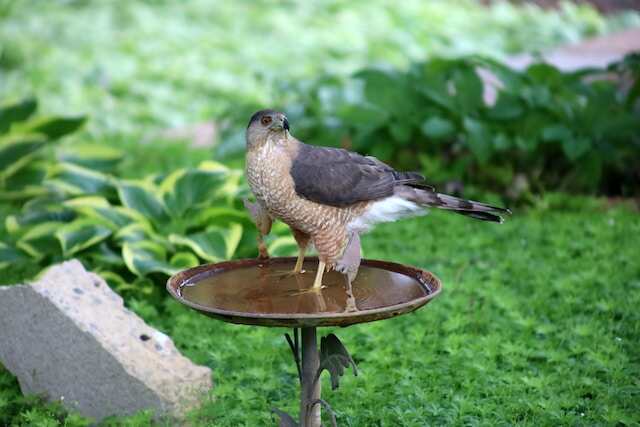
Tips for maintaining a bird bath
Bird baths are an essential part of a bird’s habitat. They need to be kept clean and filled with fresh water to continue benefiting the birds.
Regular maintenance of a bird bath can ensure that it remains safe and effective for birds. Here are some tips for maintaining your bird bath.
Cleaning the bird bath regularly
Cleaning your bird bath regularly is critical for the health and safety of birds that use it. It is recommended that you clean your bird bath at least once a week, more often during hot weather or if you have many birds visiting.
To clean your bird bath, start by emptying all the water from the basin and scrubbing it with a stiff brush to remove any dirt, algae, or debris.
Rinse the basin thoroughly with water before refilling it. If you notice any stubborn stains or buildup, use vinegar to soak the basin overnight before scrubbing it again in the morning.
Frequency and methods for cleaning the bath
The frequency of cleaning depends on how often your bird bath gets dirty due to environmental factors such as rain or windblown debris.
In general, if you see visible signs of dirt or algae growth in between weekly cleanings, then you may need to clean more frequently.
Use a non-toxic cleaner when cleaning, since harsh chemicals can harm birds. Avoid using bleach or other disinfectants since they may leave residues harmful to birds.
In addition to wiping down surfaces with cleaner, be sure also to rinse out any feeders or water sources, so there is no residue leftover inside them when not in use by avian visitors!
Providing fresh water daily
Birds require access to fresh water on a daily basis. During hot weather conditions, this becomes especially important, as stagnant water can breed bacteria that cause disease.
It’s ideal if you can refill your bird bath with clean water daily, but if not, be sure to change the water frequently.
If you notice that the water in your bird bath is starting to evaporate too quickly, consider adding a shade cover or moving the bird bath to a shaded location.
How to replace stagnant water with fresh water
When it comes time to refill your bird bath with fresh water, it’s essential to follow proper guidelines. The easiest way to do this is by using a hose, since it allows for easy control of the flow and direction of the water.
To prevent contamination during refilling, avoid letting the hose nozzle touch the basin surface directly.
Instead, hold it several inches above and move it slowly around while filling up so that you can avoid stirring up any dirt or debris that may have settled at the bottom of your birdbath.
By following these tips for maintaining your bird bath regularly and providing fresh water daily, you will have created an environment that is safe and healthy for birds visiting your yard!
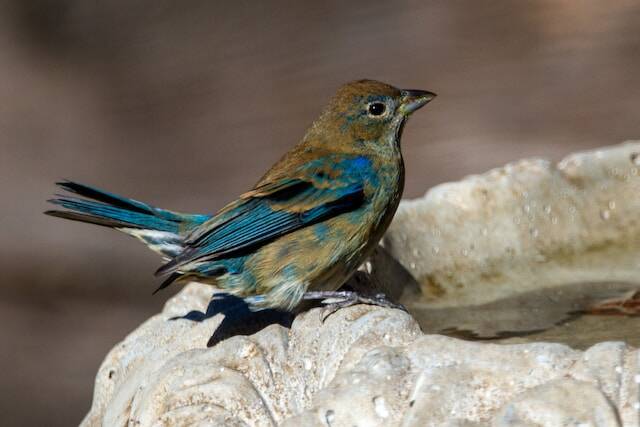
Conclusion
After examining the evidence, it is clear that birds do indeed use bird baths. Providing a bird bath in your yard can attract a variety of species and promote healthy habitats for local birds. By providing clean and safe water, you are creating a valuable resource for the avian community.
Summary of key points
Throughout this article, we have explored various aspects of bird baths and their use by birds. We learned that not only do birds use bird baths for hydration and feather maintenance, but they also provide an important source of cooling off on hot summer days.
Additionally, having a bird bath in your yard can increase biodiversity, promote healthy habitats for birds and provide enjoyment for humans. It is essential to keep your bird bath clean to prevent the spread of disease among birds.
Cleaning should be done regularly using a non-toxic cleaner or diluted bleach solution to remove any buildup of algae or bacteria.
Fresh water should also be provided daily, especially during warmer months when evaporation rates are high.
Importance of providing clean and safe water
The importance of providing clean and safe water cannot be overstated. Birds are highly susceptible to disease transmission through contaminated water sources.
By keeping your bird bath clean and well-maintained, you can reduce the spread of pathogens among local avian populations.
In addition to promoting healthy habitats for birds, providing fresh water can also attract more species to your yard.
As word spreads about the reliable source of clean water in your yard, new visitors may stop by to take advantage of this valuable resource.
Overall, adding a bird bath to your backyard is an excellent way to promote the health and well-being of local birds while enjoying their company from a distance.
With some regular maintenance and attention paid to cleanliness, you can create an oasis for these wonderful creatures right in your own backyard!
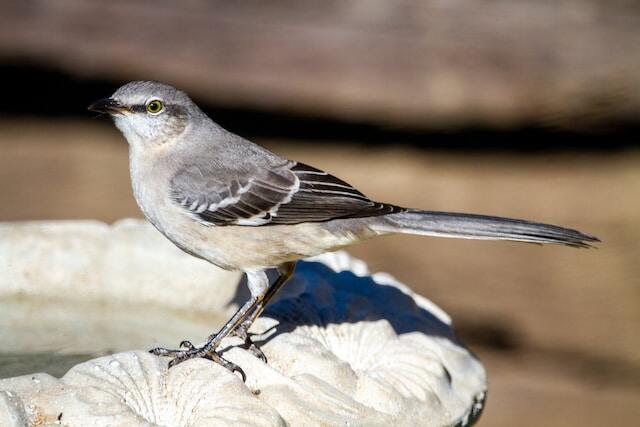
FAQs: Do Birds Actually Use Bird Baths?
Do birds actually use bird baths?
Yes, birds use bird baths to clean their feathers, remove dirt and parasites, and cool down in hot weather.
How often should I change the water in a bird bath?
It’s recommended to change the water in a bird bath every day to prevent bacterial growth and ensure clean, fresh water for birds.
Can I put a bird bath near a feeder?
Placing a bird bath near a feeder can provide birds with easy access to water for drinking and bathing, enhancing their overall feeding experience.
What depth should a bird bath be?
A bird bath should be shallow, around 1-2 inches deep, to allow birds to comfortably bathe while ensuring their safety.
Do bird baths need a fountain or bubbler?
While not essential, adding a fountain or bubbler to a bird bath can create movement and sound that attracts birds and encourages them to use the bath.
How do I prevent mosquitoes from breeding in the bird bath?
To prevent mosquito breeding, regularly empty and refill the bird bath with fresh water, as mosquitoes prefer stagnant water for reproduction.
What should I do if a bird bath attracts unwanted pests?
If pests become a problem, consider relocating the bird bath to a different area or implementing pest control measures to discourage their presence.
Can I use tap water in a bird bath?
Tap water is generally safe for birds, but using a dechlorinator or letting the water sit for 24 hours before adding it to the bath can help remove harmful chemicals.
How do I keep the bird bath from freezing in winter?
Use a heated bird bath or place a deicer in the bath to prevent the water from freezing, ensuring birds have access to water even in cold temperatures.
What materials are best for a bird bath?
Bird baths made of concrete, ceramic, or plastic are popular choices as they are easy to clean, durable, and provide a suitable surface for birds to perch on and bathe.

